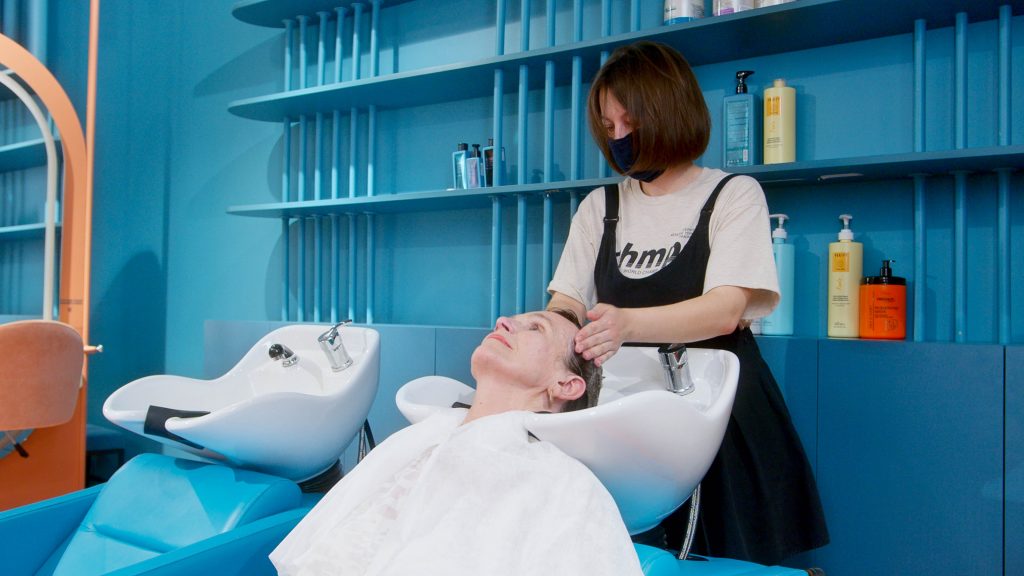The dread of waking up late with hair that looks like you slept in a deep fryer is not a good way to start the day. Yes, shiny, messy hair is trendy these days. But there is such a thing as too much of a good thing. An excessively oily scalp can cause itching and seborrheic dermatitis. It can also be a food source for the fungus that causes dandruff.
However, you do not want to remove all of your oil. Your natural oils protect and nourish your hair, which is essential for a healthy scalp and glossy hair. Here’s how to get rid of the oil without causing damage to your hair or hurting your scalp.
Shampoo thoroughly
It may not appear to be rocket science, but washing your hair wrong can result in an oily scalp and damaged hair.
To wash your hair correctly, carefully massage a tiny quantity of shampoo into your roots and scalp. Use your nails sparingly and avoid causing undue stress on the strands. Scrubbing too hard might hurt your scalp and lead it to generate additional oils.
Concentrate on your scalp, which contains the oil, rather than the length of your hair. Don’t scrape or apply shampoo directly to your hair’s ends. Instead, when you rinse, let the shampoo run through the ends.
And, fortunately for your money, you should avoid the “repeat” cleaning.
Is it better to moisturise or not to moisturise?
If you have oily hair, you might think about using a lightweight conditioner. The mild conditioner can help restore and regulate the moisture on your scalp without causing it to overproduce. Oily hair is frequently the consequence of the scalp receiving instructions to generate more oil as the hair becomes dry from various products.
A poor rinse job can also cause oily hair after adding products to the hair during the washing process. To eliminate excess residue, consider conditioning first and washing second, or abandon your regular conditioner favouring a leave-in conditioning spray (on your ends only).
Avoid silicone-containing goods
Silicone is used in many products, including shampoos, conditioners, creams, and style treatments, to smooth and shine hair. Silicones may build up on the hair and make it seem filthy, greasy, and weighted down, in addition to providing additional shine that can look a lot like grease. The following silicones are commonly found in hair products:
- Dimethicone
- Cyclomethicone
- Amodimethicone
Silicones can also prevent moisture from entering the hair shafts. Please do your roots a favour and avoid any products containing components that finish in “-cone.”
Honey can be used to sweeten.
Because honey has antibacterial and antifungal qualities, it can help calm your scalp and prevent or cure dandruff if you’ve let the oil get out of hand.
According to one 2001 study, a simple combination of 90% raw honey and 10% water helped decrease symptoms of seborrheic dermatitis such as itching, redness, flakiness, and excessive oil production.
Clean your brush
A soiled brush has no place in a newly cleaned head of hair. Your brush may be clogged with styling chemicals, oils, and another crud that can cause your hair to get dirty shortly after washing.
To remove buildup, clean your style tools with a little shampoo or mild soap. Similarly, after each brushing, wipe away all of the stray hair to maintain your brush free of oil and debris.
Go natural
Straightening irons and blow dryers may help you achieve a smooth, sleek look. They can, however, make your hair seem greasy faster.
Allow your hair to air-dry and enjoy its natural texture. You’ll extend the life of your washes and avoid heat damage.
Use products designed for greasy hair
Haircare products have received a great deal of thinking and study to live up to their hype. If your shampoo isn’t doing the trick, try a clarifying shampoo with harsher detergents. This can help remove oil from your hair and leaving it greasy-free.
However, if you enjoy sweaty activities or need to wash your hair regularly, gentle baby shampoo may be less irritating and better suited for frequent usage.
A poor day might be worse by oily hair. The good news is that there are several treatments available to help you get it under control. It’s also worth noting that the quantity of oil you generate fluctuates over time and typically decreases as you age. If your oily hair issues still don’t plan on leaving you alone, visit the verified Dermatologist in Lahore.








